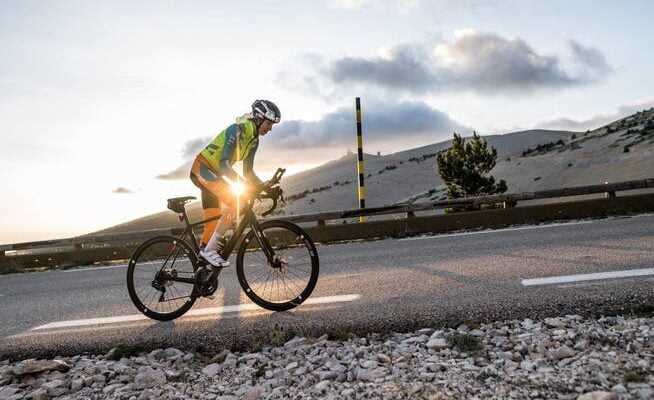Cyclist Nicole Reist has won every long-distance race for ten years and still continues to train. What she is looking for cannot be measured with results.
Nicole Reist climbing the legendary Mont Ventoux at the Race Across France 2019.
Finding an appointment with Nicole Reist is not easy. Reist, 37, sticks to a strict schedule. Up at 1:30 am, then 3 hours of training, at 5 am she is in the office and works until 4 pm. Then training again. She goes to bed between 7 and 8 p.m. Thanks to this strict daily routine, the woman from Zurich has become the best long-distance cyclist in the world. Wherever she competes, she wins – it’s been like that for ten years.
Now that winter is over, Reist spends a lot of time in the air-raid shelter, where her racing bike is on a roller. On the walls are pictures of her support team and all the races she has won in recent years; along with motivational quotes. Sentences like: “Success comes from outside the comfort zone” or: “Do your best. And when you’re done with that, surpass yourself,” she internalized.
Reist often listens to music as she pedals. But sometimes it’s very quiet in the basement. “Especially in the hard units, I want to concentrate fully on the training,” she says. Because of the concentration, she also starts training in the middle of the night. “I want to do a long unit before work, then I can clear my head.”
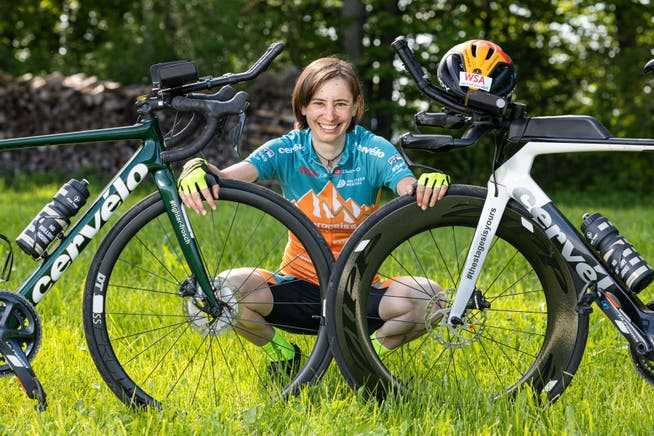
Depending on the route profile, Nicole Reist switches between mountain (left) and time trial bike.
The sponsorship income does not cover the costs of the sport
Reist does not make money from the sport, she works full-time as a structural engineer. In ultracycling, prize money is meager or non-existent; Sponsorship does not even cover the costs. That’s why Reist also trains in Switzerland in winter. Unlike professionals and some ambitious amateurs who prepare for the season in the south. Reist says: “I still can’t imagine being a professional. My work in the office challenges my head, I would miss that.»
As soon as the weather permits, Reist is drawn out of the basement and outside. Then she drives, for example, from her place of residence in the Zurich Oberland to Toggenburg and crosses the Schwägalp six times. Neu St. Johann-Urnäsch, Urnäsch-Neu St. Johann – and so on. You can see the hard training on her. Travel is narrow, a lightweight. She has given herself the nickname “Berggeiss”.
There are hardly any days when Reist is not on his bike. “I recover better when riding at low intensity than when I put my feet up.”
In view of her palmarès, the series winner could actually stop, she won everything. But they are only interested in the results. She says: “I never aim for victory. I define a time that I want to achieve.”
Reist says she wants to find out where her performance limits are. This state when the head and body work together optimally, like gears that mesh perfectly. “I haven’t found that yet,” she says. That’s why she continues to train strictly, clocks through her days, there is hardly any time for hobbies. Reist says: “I prefer to read a book. And I’m glad that my environment is tolerant and understands my training.”
Two years after the first race she is world champion
As a girl, Reist played floorball and tennis. She was already ambitious as a child – the perfect qualities for an ultracycler. “I discovered cycling because I wanted to be independent of fellow players,” says Reist.
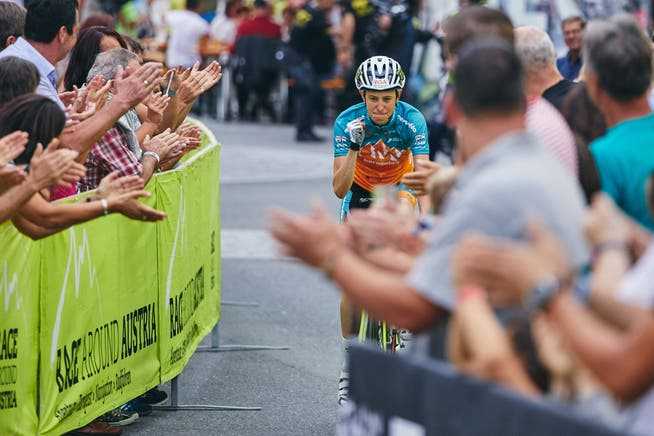
Once around Austria – Nicole Reist reaches the finish line of the Race Around Austria as the winner.
In 2005 she took part in a 24-hour race without any ambitions. She says: “The goal was not to get off the bike because I wouldn’t have been able to get back on after a break.” She finished the race, but Reist noticed that she had a lot of potential. She began to train systematically. Two years later she became world champion over the long distance; in a race in Austria, 820 kilometers, 12,000 meters in altitude. But on their website it says: “Even because the performance limit is not reached.”
Since her first world title, Reist has steadily increased her training workload, driven by the search for the perfect interaction between body and mind. She is currently preparing for the Race Across America (RAAM), the toughest bike race in the world. She has competed there twice and won twice.
Nicole Reist on her way to her second victory at the Race Across America.
The RAAM is torture in a team, brutal for a solo athlete
Solo athletes, teams of two, four and eight start at the Race Across America. RAAM is grueling in a team, brutal for a solo athlete. The route runs from California through Arizona to Colorado. There Reist has to cross the Rocky Mountains, the highest pass is over 3300 meters high. Reist is quickly exposed to the scorching heat of the Mojave Desert and the cold of the mountains. The vastness of Kansas follows, it goes straight ahead endlessly. Finally, the Appalachian Mountains follow, a hilly landscape with poisonous gradients.
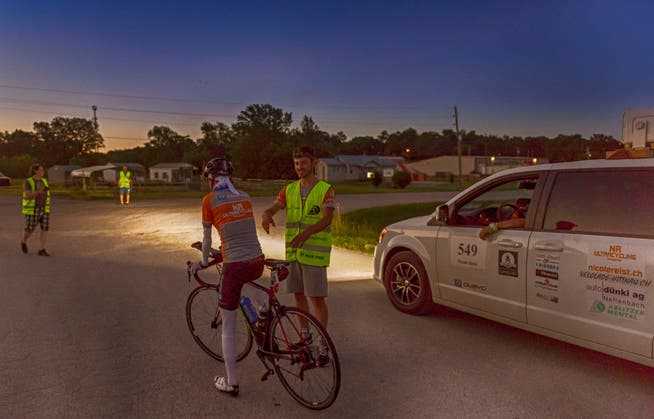
Morning mood at the Race Across America – Nicole Reist sleeps only nine hours in almost ten days.
As if almost 5,000 kilometers and 50,000 meters in altitude weren’t enough, Reist decides for herself when to take a break. In 2018 she slept nine hours at RAAM. Not per night, but during the almost ten days it took her from the Pacific to the Atlantic. Reist slept in short periods of 30 to 45 minutes, three minutes after being woken up she was back in the saddle.
The lack of sleep causes the drivers to have hallucinations. “Fortunately, it’s not that bad for me,” says Reist. She is most likely to see trees that look like animals. «Once when it was hot, I saw a giraffe. But I was always aware that this wasn’t real.” The head could no longer process all the information correctly.
There is something self-destructive about ultracycling, as sports doctors also say. Reist says: “Of course, races like the Race Across America are not good for the body.” But she only competes for two weeks a year, which corresponds to two to three races. “The rest is training developed and controlled by my coach. That’s why my sporting performance is probably healthier than someone who just drives off.”
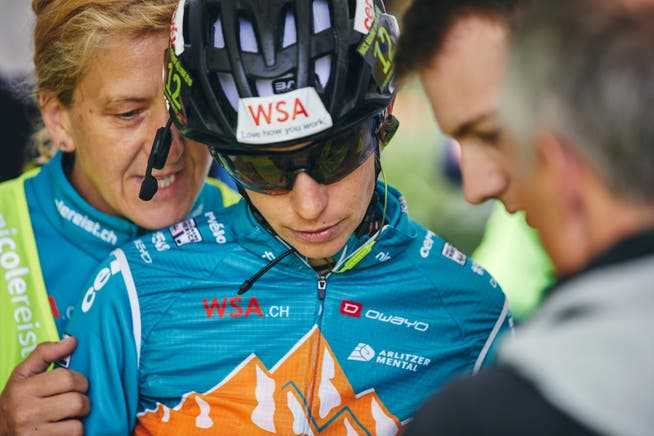
Pure exhaustion at the Race Around Austria 2019.
Ultracycling is teamwork
Reist has been waiting two years to return to Race Across America. Despite the two victories, she has not found the performance limit even in the longest race. In 2020 the RAAM was canceled due to Corona, last year Reist found out shortly before the start that she was not allowed to enter the USA. “I swallowed empty, but my team had worked out a plan B,” says Reist.
Instead of the Race Across America, Reist started last year in the Race Around Austria and then in the Adriatic Marathon in Italy. There she fell and suffered abrasions. Nevertheless, she got back on the bike, kept pedaling and won. Only one rider out of the men’s field was faster than them.
During the race, Reist is accompanied by a team of up to eleven helpers; they prepare the meals, follow her in the car, are navigators, masseuses and motivators all in one. At home in Switzerland, a doctor, a technician and the media officer are always available. Reist says her sport is teamwork. “My job in this team is cycling. That’s what I think about when I don’t feel like training.”
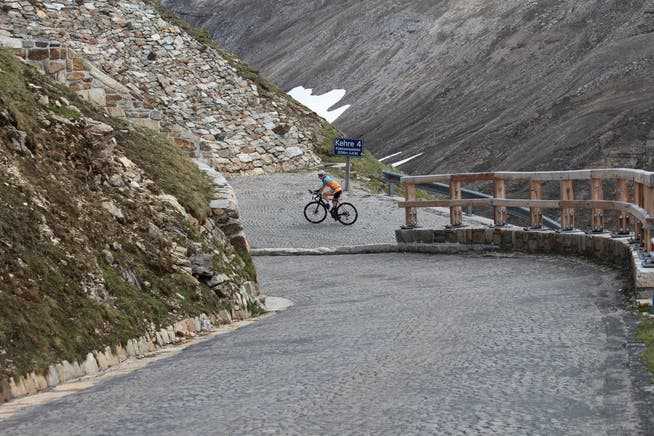
Nicole Reist at the Glocknerman ultramarathon on the way to her fourth long-distance world championship title.
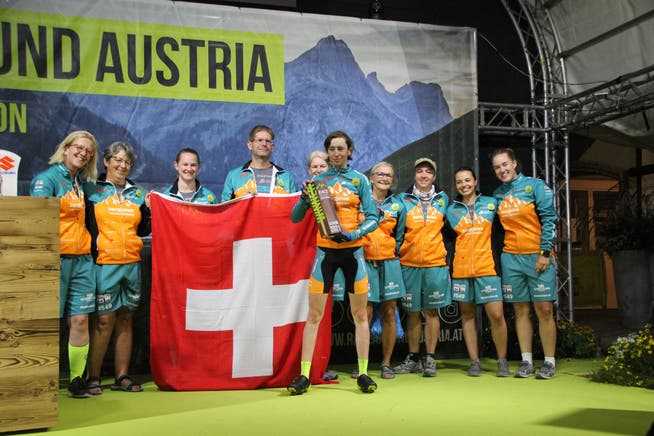
Up to eleven people accompany Nicole Reist during a race.
How long is this going to continue with long distances, training in the middle of the night, this constant torment? Reist says she will drive as long as she enjoys the sport. And until she finally found the performance limit. She says: “Of course, the screws that we can turn in training are getting smaller and smaller. But there is still something in it.”
In June she has the chance to win the Race Across America for the third time. The record for women is six wins. But of course Reist is not interested in this record.
Because what she is looking for cannot be measured by results.
